Broaching is a machining process that involves removing material using a special tool called a broach. The broach is a multi-toothed cutting tool that progressively increases in size, enabling it to cut different parts of a workpiece in a single pass. This process is especially efficient for producing internal keyways, splines, and other complex shapes with high precision.
Basic Components of Broaching
- Broach: The central component of the broaching process, the broach is a long, slender tool with multiple teeth. It is designed to progressively cut the desired shape into the workpiece.
- Workpiece: The material that undergoes the broaching process. It can be made of various metals, including steel, aluminum, or brass.
- Broaching Machine: The machinery responsible for executing the broaching process. The broaching machine holds the workpiece securely and facilitates the movement of the broach through the material.
- Fixture: A device used to secure the workpiece in place during the broaching operation. Fixtures ensure stability and precision during the cutting process.
- Cutting Fluid: To reduce friction, dissipate heat, and improve the overall efficiency of the process, cutting fluid is often applied during broaching.
Broaching Process Steps
1. Setup and Fixturing
Before the actual broaching operation, careful setup is crucial. The workpiece is securely fixed in place using a fixture on the broaching machine. Proper alignment is essential to ensure accuracy in the final product.
2. Broach Selection
Choosing the right broach is a critical decision. Broaches come in various shapes and sizes, and selecting the appropriate one depends on the desired features and the material of the workpiece.
3. Broaching Operation
The broach is carefully guided through the workpiece, cutting away material with each pass. The process is often completed in a single stroke, making it highly efficient. The cutting action can be either linear or rotary, depending on the type of broaching machine and broach used.
4. Inspection
After the broaching process, the workpiece undergoes a thorough inspection to ensure that the desired specifications and tolerances have been met. Any necessary adjustments can be made at this stage.
Types of Broaching
Linear Broaching
In linear broaching, the broach moves linearly along the workpiece. This is a common method for cutting keyways and splines. Linear broaching can be classified into two main types:
Internal Broaching
Internal broaching focuses on creating precise internal features within a workpiece. Internal broaching is highly efficient, providing exceptional precision and accuracy in producing internal features, essential for various industries like automotive, aerospace, and machinery manufacturing. The internal broach method significantly reduces the need for multiple machining operations, offering a streamlined and cost-effective solution for creating complex internal geometries with tight tolerances.
External Broaching
Unlike internal broaching, which focuses on internal features, external broaching involves cutting material from the external surface of a workpiece using a specialized broach tool. This process allows for the creation of flats, contours, or other external profiles with high precision in a single pass.
The broach, equipped with cutting edges or teeth, is carefully guided along the external surface of the workpiece, gradually removing material to form the desired shape. External broaching is highly efficient and ideal for applications requiring accurately machined external features, contributing to improved component functionality and fit in industries such as automotive, aerospace, and general engineering.
Rotary Broaching
Rotary broaching is a specialized machining process that involves the simultaneous rotation of both the cutting tool and the workpiece. Unlike traditional linear broaching, where the broach moves linearly through the workpiece, rotary broaching imparts a rotary motion to both the broach and the workpiece. This process allows for the efficient creation of intricate shapes and forms with a single pass of the broach.
The key component in rotary broaching is the rotary broach tool, which typically has a polygonal or contoured shape. The tool is designed to produce specific shapes, such as hexagons, squares, or other polygons, and it can also be customized for more complex forms like gears or splines. Rotary broaching offers several advantages including single-pass operation, improved tool life, and overall versatility.
Surface Broaching
Surface broaching is employed to cut flat surfaces on a workpiece. It is commonly used in applications where a smooth and precise finish is essential.
Pull Broaching
Pull broaching involves applying force to the broach tool in the opposite direction of the cut, drawing the broach through the workpiece. This method is more common and widely used in vertical broaching machines. Pull broaches typically have a hydraulic or mechanical system that pulls the broach downward or vertically through the workpiece that is fixed on a sturdy fixture or work table.
Push Broaching
Push broaching, on the other hand, applies force in the same direction as the cutting motion. This method pushes the broach upward or forward through the workpiece. Push broaches are less common and often used in specialized applications. They apply force from the bottom of the workpiece to push the broach upwards.
Keyway Broaching
Keyway broaching is specifically designed for cutting keyways, which are slots that accommodate keys or other mating components.
Advantages of Broaching
High Precision
Broaching is renowned for its ability to produce highly accurate and intricate shapes with tight tolerances. The single-pass operation minimizes the chance of cumulative errors, resulting in superior precision.
Efficiency
The efficiency of broaching lies in its ability to complete complex operations in a single pass. This reduces machining time, enhances productivity, and lowers production costs.
Versatility
Broaching is a versatile process suitable for a wide range of materials, including metals, plastics, and composites. It can be applied to various industries, such as automotive, aerospace, and manufacturing.
Surface Finish
The broaching process often yields a superior surface finish, reducing the need for additional finishing operations. This is particularly beneficial in applications where a smooth surface is critical.
Broaching Applications
Automotive Industry
Broaching is extensively used in the automotive industry for manufacturing components like gears, shafts, axles, and spline shafts. The precision and efficiency of broaching make it ideal for producing the intricate shapes required in automotive engineering.
Aerospace Industry
In the aerospace industry, where precision and reliability are paramount, broaching is employed to create components such as turbine blades, engine parts, and aerospace gears.
Medical Equipment Manufacturing
Broaching is utilized in the production of medical instruments and implants, where the need for precision is critical. The process ensures the creation of intricate components with tight tolerances.
Firearms Manufacturing
In the production of firearms, broaching is commonly used to create features like rifling in gun barrels. The precision of the broaching process is crucial for the accuracy and performance of firearms.
Challenges and Considerations
Tool Wear
The cutting teeth of the broach can experience wear over time, affecting the quality of the cuts. Regular maintenance and monitoring are necessary to address tool wear and ensure consistent performance.
Initial Setup Costs
While broaching offers long-term cost savings through its efficiency, the initial setup costs, including the purchase of broaching machines and tools, can be relatively high.
Limited to Internal Shapes
While highly effective for internal machining, broaching is not suitable for cutting external shapes. Other machining processes may be required for such applications.
Future Trends in Broaching
Advanced Materials
As industries continue to explore and implement advanced materials, the broaching process is likely to evolve to accommodate these changes. New tool materials and coatings may be developed to enhance the efficiency of broaching on exotic materials.
Automation
The integration of automation and robotics into manufacturing processes is a growing trend. Broaching machines may become more automated, leading to increased precision and reduced labor costs. The CNC machining process can be used for broaching thanks to new automation technology.
Simulation and Modeling
Advancements in simulation and modeling technologies may allow manufacturers to optimize the broaching process digitally, reducing the need for physical prototypes and minimizing errors.
Broaching Machines
Broaching machines are specialized tools used to perform the broaching process, which involves cutting precise shapes or features into workpieces. There are several types of broaching machines, each designed for specific applications and varying in their mechanism of operation:
Vertical Broaching Machines
There are two types of vertical broaching machines:
- Pull-Type: These machines are the most common type of vertical broaching machines. They use a hydraulic or mechanical system to pull the broach tool vertically through the workpiece fixed on a sturdy fixture or work table.
- Push-Type: Less common than pull-type vertical machines, these apply force from the bottom to push the broach upward through the workpiece.
Horizontal Broaching Machines
There are two types of horizontal broaching machines:
- Surface Broaching: These machines use a horizontal axis for broaching flat surfaces on a workpiece. This horizontal broaching machine often employs a linear motion to move the workpiece across the broach tool.
- Continuous Chain Broaching: These horizontal machines involve a continuous loop chain carrying broach tools, typically used for high-volume production of small components.
Rotary Broaching Machines
- Table-Top Rotary Broaching: Suitable for smaller workpieces, these broach machines enable the simultaneous rotation of both the broach tool and the workpiece, creating intricate shapes with a single pass.
- CNC Rotary Broaching: Integrated with computer numerical control (CNC) technology, these machines provide precise control over the rotational and linear movements, enabling high-precision and complex broaching operations.
Specialized Broaching Machines
- Keyseating Machines: Designed specifically for cutting keyways, these machines use a rotating cutter to remove material and create precise keyway slots.
- Pot Broaching Machines: Employed for large and heavy workpieces, these machines use a stationary broach and move the workpiece around it for cutting.
Continuous Broaching Machines
- Continuous broaching is a specialized form of broaching that involves a continuous and uninterrupted movement of the workpiece through the broaching machine. In this process, multiple workpieces are typically fixtured together onto a continuous chain or fixture, which moves through the broaching machine in a continuous motion.
Combination Broaching Machines
- Vertical and Horizontal Combination Machines: These versatile machines offer both vertical broaching and horizontal broaching capabilities, allowing for a wider range of machining options within a single system.
Each type of broaching machine has its advantages and is suitable for specific applications based on factors such as the size and shape of the workpiece, required tolerances, production volume, and the complexity of the machining operation. The choice of broaching machine depends on the specific requirements of the manufacturing process and the desired outcome.
Broaching Materials
The materials used in broaching depend on both the broach tool and the workpiece being machined. Broach tools, being cutting tools, are typically made from hard and wear-resistant materials to withstand the forces involved in the cutting process.
The workpiece material, on the other hand, can vary widely depending on the industry and application. Here are common materials used in broaching:
Steel Alloys: Broaching is commonly used on various steel alloys, including carbon steel, alloy steel, and tool steel. These materials are prevalent in industries such as automotive and aerospace.
Aluminum: Aluminum and its alloys are often broached, particularly in applications where lightweight components are essential, such as aerospace and automotive.
Brass and Bronze: These materials are used in applications where corrosion resistance and electrical conductivity are important, such as in electronic components.
Stainless Steel: Stainless steel is known for its corrosion resistance and is commonly broached, especially in applications where hygiene and durability are critical, such as medical equipment.
Cast Iron: Broaching is also applicable to cast iron, which is used in various industries for its excellent castability and machinability.
Broaching Machine Tools
Broaches or broaching tools come in various shapes and types, each designed for specific applications and cutting requirements. Below are some common broaching tool shapes and types although custom broaches are widely used in the manufacturing industry.
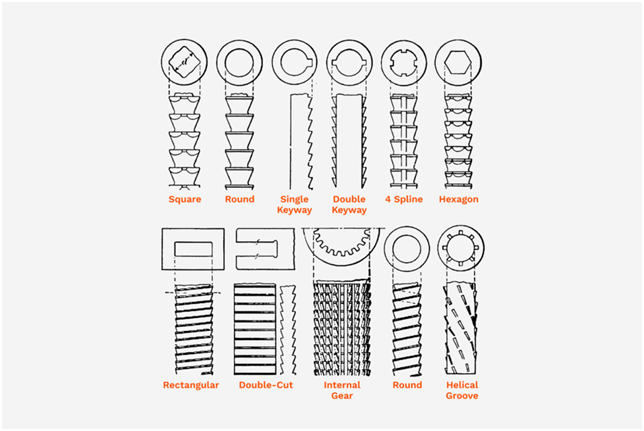
Keyway Broaches:
- This broaching tool is used for cutting keyways, which are slots that accommodate keys or other mating components.
- Available in various sizes to match different keyway dimensions.
Square Broaches:
- Designed for cutting square holes or shapes.
- Often used in applications where a precise square shape is required.
Hexagonal Broaches:
- Used for cutting hexagonal holes or shapes.
- Commonly employed in the production of bolts, nuts, and other components with hexagonal features.
Round Broaches:
- A cutting tool designed for cutting round holes or shapes.
- This broaching tool is used in applications where circular features are necessary.
Splined Broaches:
- Used for cutting splines, which are longitudinal ridges or teeth on a shaft.
- Important in the production of gears and other components requiring a spline connection.
Dovetail Broaches:
- A cutting tool designed for dovetail-shaped grooves or slots.
- Commonly used in applications where a sliding or locking mechanism is needed.
Internal Broaches:
- Finishing teeth designed for cutting internal features on a workpiece.
- Can include various shapes such as square, hexagonal, round, etc., depending on the specific requirement.
External Broaches:
- Used for cutting external surfaces of a workpiece.
- Can create external shapes such as flats, hexagons, or other geometries.
Surface Broaches:
- Finishing teeth designed for cutting flat surfaces on a workpiece.
- Used when a smooth and even surface finish is required.
Involute Gear Broaches:
- Specifically designed for cutting involute gears.
- Essential in gear manufacturing for creating the precise tooth profiles required for smooth gear engagement.
Serration Broaches:
- Used for cutting serrations, which are series of notches or teeth.
- Commonly employed in applications where a serrated surface is needed for gripping or locking purposes.
Taper Broaches:
- Finishing teeth designed for cutting tapered holes or shapes.
- Useful in applications where a gradual change in diameter is required.
Oval Broaches:
- Used for cutting oval or elliptical shapes.
- Applied in situations where a non-circular opening is necessary.
These are just a few examples, and the diversity of broach shapes reflects the broad range of applications and machining needs in various industries. The choice of a particular broach type depends on factors such as the desired feature, material of the workpiece, and specific manufacturing requirements.
Broach Sharpening and Maintenance
Sharpening broaches is crucial for maintaining the effectiveness, accuracy, and longevity of these cutting tools. Here are key reasons why sharpening broaches is important:
Precision and Accuracy
A sharp broach ensures precise cutting teeth and accurate formation of the intended shapes or features on the workpiece. Dull or worn broach teeth may lead to inaccuracies, poor surface finishes, or deviations from the required dimensions, compromising the quality of the machined components.
Extended Tool Life
Regular sharpening removes wear and damage from the cutting edges of broaches, extending their lifespan. Proper maintenance through sharpening helps prevent premature tool failure and ensures consistent performance over multiple uses.
Efficient Cutting
Sharp broaches reduce cutting forces and heat generated during machining, enhancing cutting efficiency. This efficiency not only improves the speed of the machining process but also minimizes the risk of workpiece damage due to excessive heat or force.
Consistency in Machining
A consistently sharp broach results in consistent and uniform machined surfaces and dimensions. This is critical for maintaining tight tolerances and meeting specifications across batches of machined components.
Cost Savings
Regularly sharpened broaches contribute to cost savings by reducing the frequency of tool replacement. By maximizing the lifespan of broaches through sharpening, companies can reduce tooling expenses in the long run.
Safety Considerations
Dull or improperly sharpened broaches can pose safety hazards due to increased cutting forces, potential workpiece slippage, and erratic machining behavior. Keeping broaches sharp helps maintain a safer working environment.
Overall, the sharpening of broaches is a fundamental aspect of their maintenance and contributes significantly to the quality, efficiency, and safety of the broaching process in metalworking industries.
Conclusion
The broaching manufacturing process stands as a testament to the ingenuity and precision achievable in modern metalworking. Its versatility, efficiency, and ability to produce intricate shapes make it a valuable asset in various industries, from automotive to aerospace.
Start a Broaching Manufacturing Project Today
The Federal Group USA stands as the unparalleled choice for broaching solutions due to our unwavering commitment to excellence, cutting-edge technology, and a proven track record of delivering precision in metal cutting. Our company sets itself apart by investing in state-of-the-art broaching machinery and employing highly skilled professionals with extensive expertise in the field.
We prioritize customer satisfaction by offering tailor-made broaching services that meet the unique requirements of diverse industries, from automotive to aerospace. The Federal Group USA excels in delivering high-precision components with tight tolerances, ensuring that our clients receive top-notch quality products.

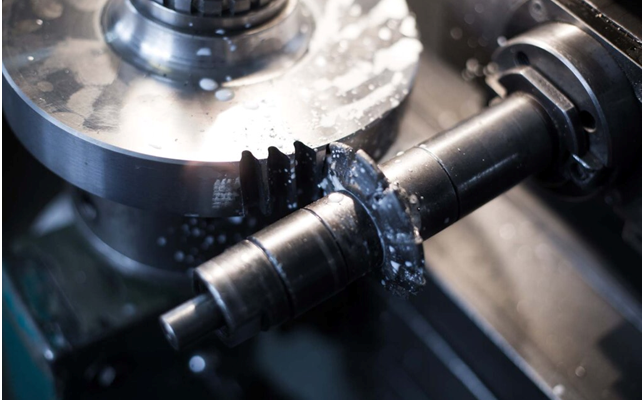
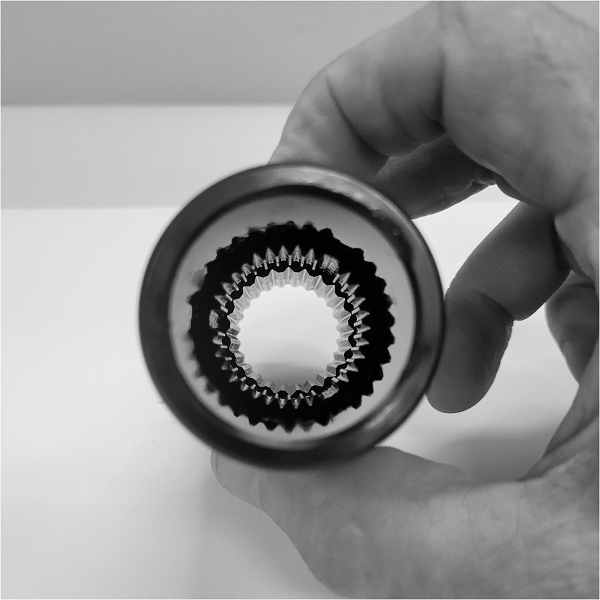
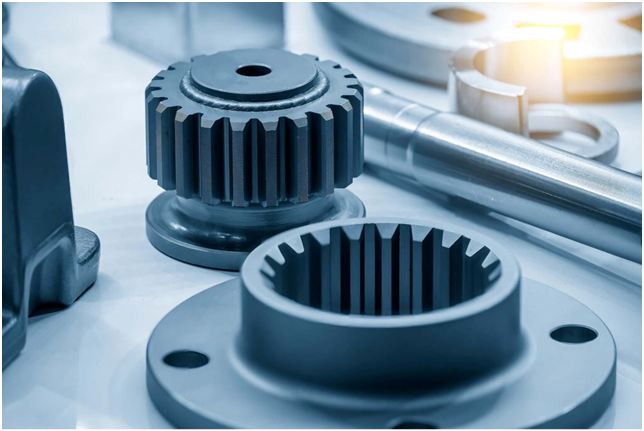
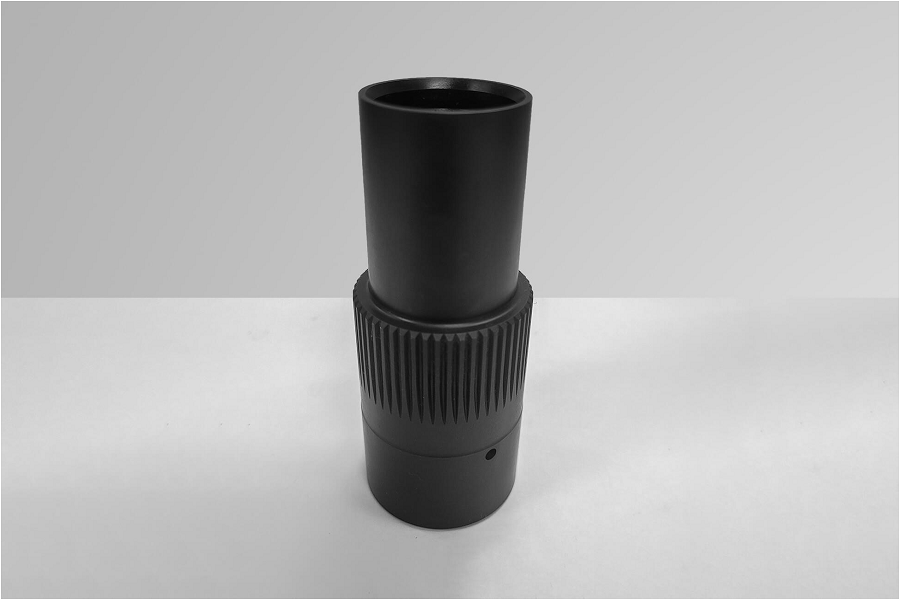
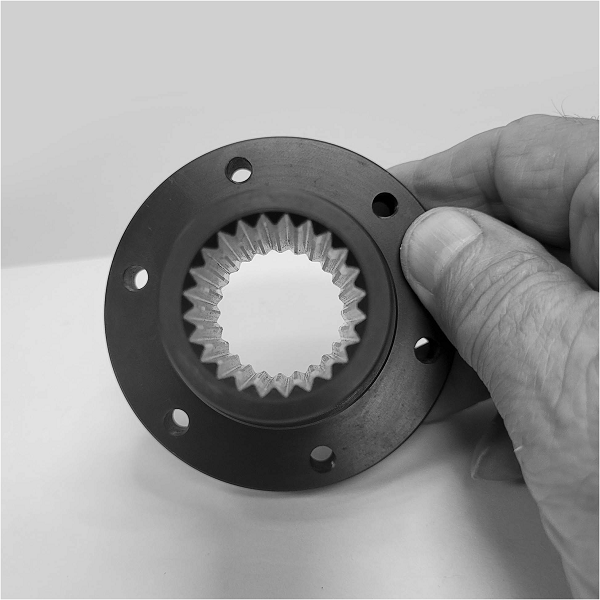







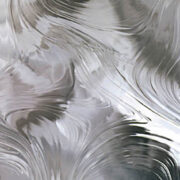



Comments